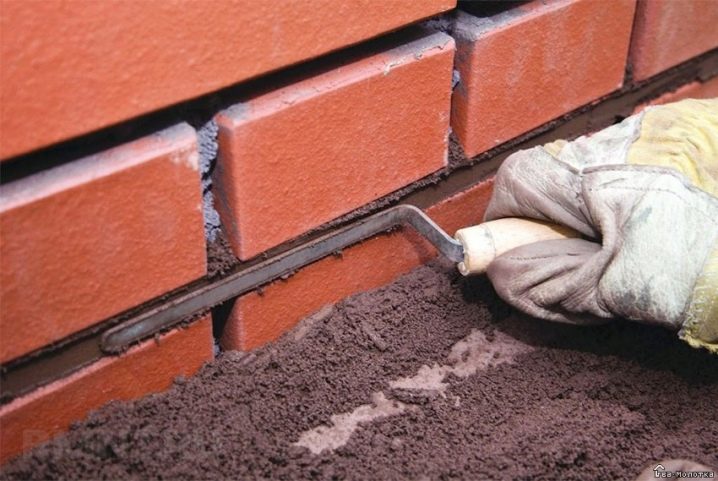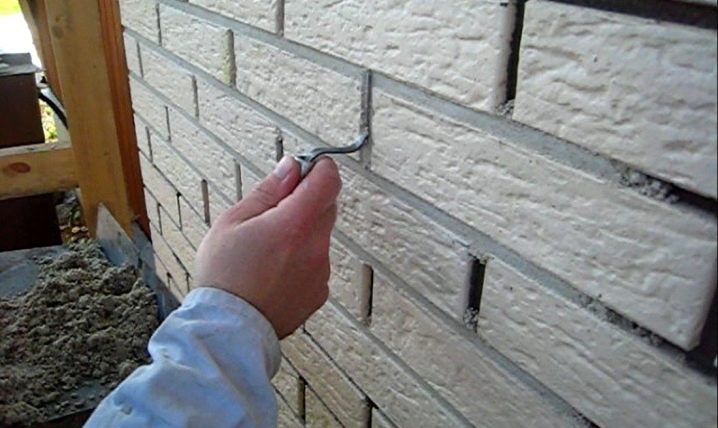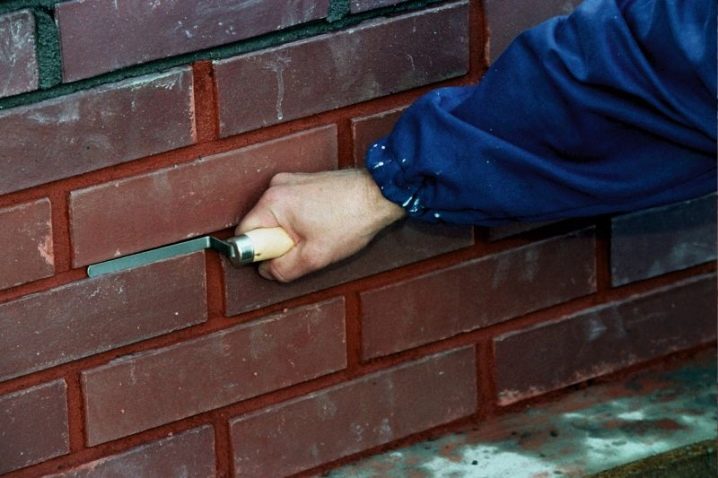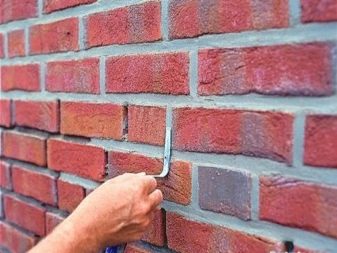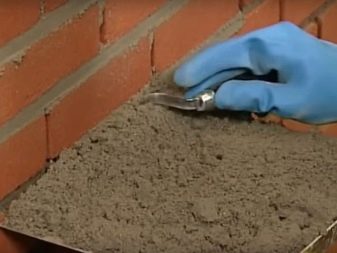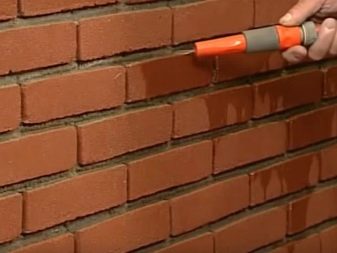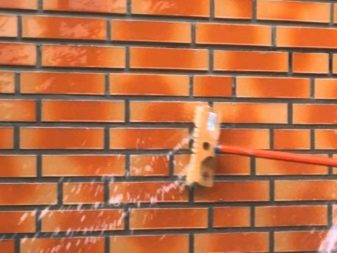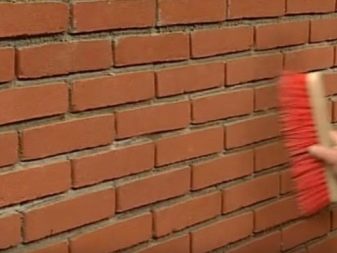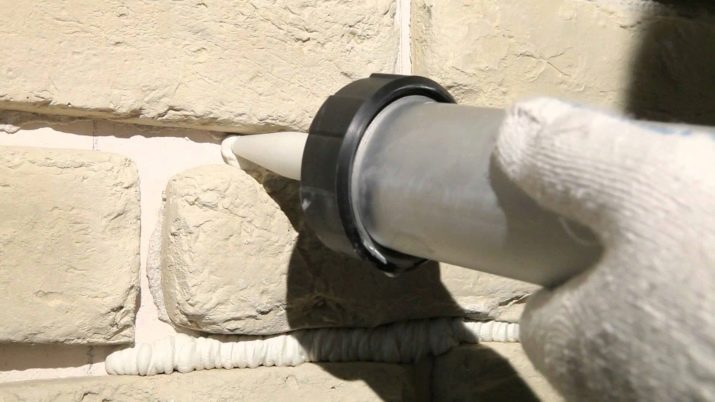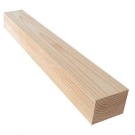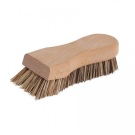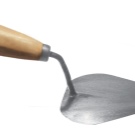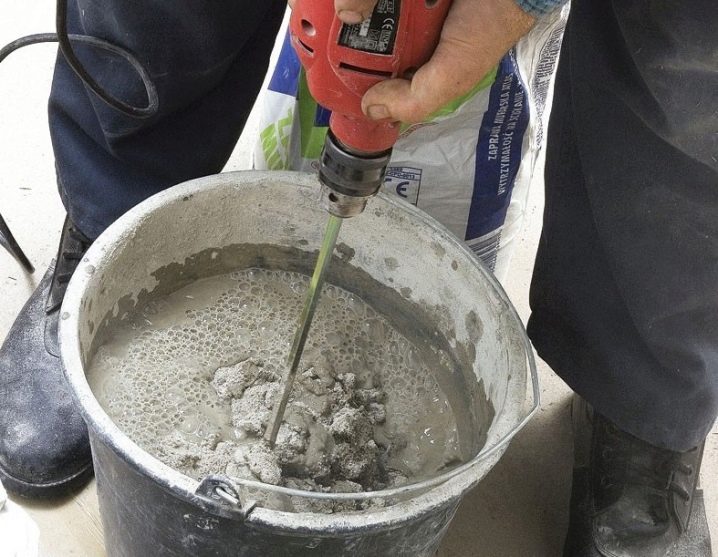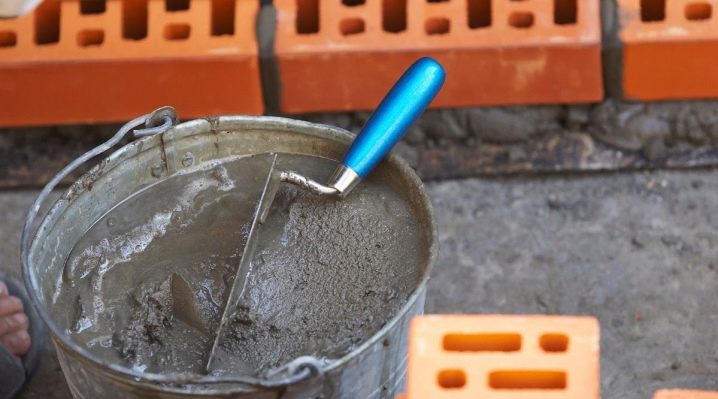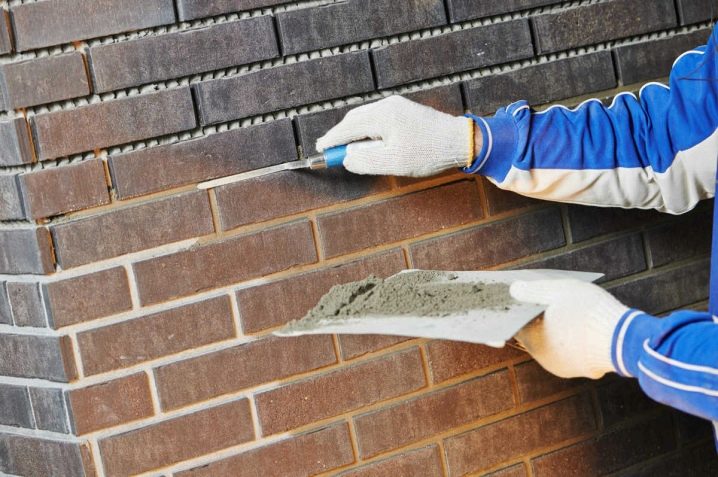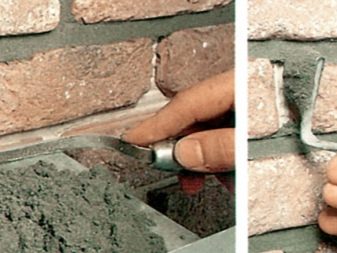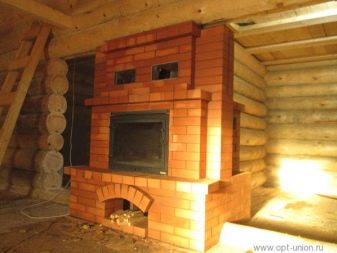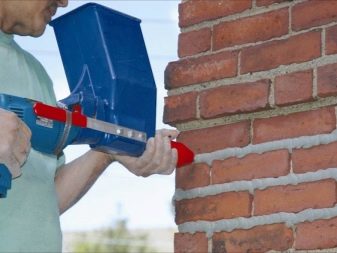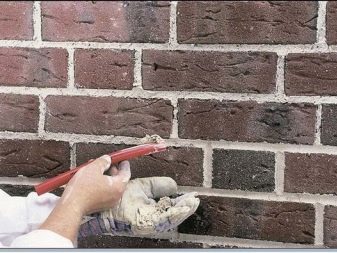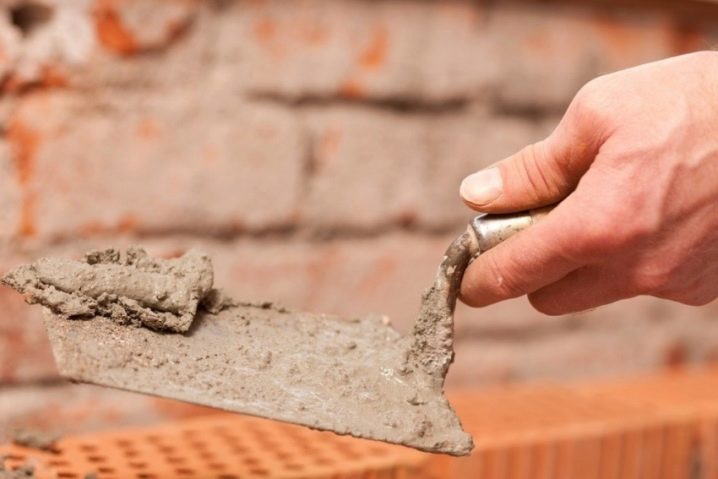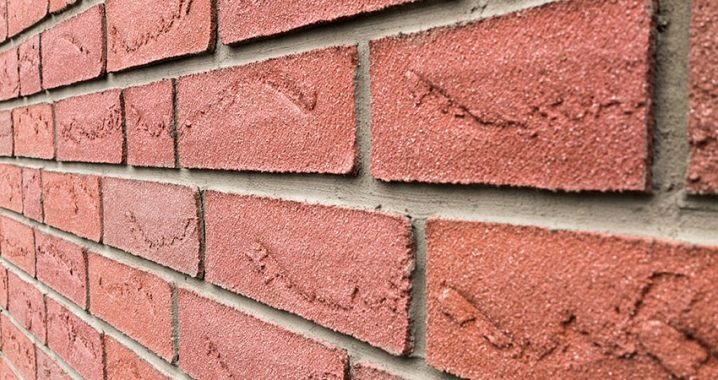Jointing brickwork

Any building made of brick will be reliable and durable only if you correctly seal the seams between the individual blocks. Such a procedure will not only extend the service life of the erection, but also make it more aesthetic. Unfinished seams can literally “disfigure” the appearance of the building with their carelessness and carelessness. In this article we will examine in detail what the features of the masonry jointing are, and what its varieties exist.
What is and what is the need for jointing?
Laying brickwork is a special procedure during which the seams between individual bricks are compacted and processed, which has a favorable effect on both the appearance and the stability and insulation of the brick structure. Without a well-made jointing, such buildings usually look very poor and disharmonious.
It is permissible to apply to high-quality jointing when finishing the interior, and when making the external wall bases. In the conditions of the street, such procedures are the most relevant and popular. However, many users ask an important question: what is the need for jointing brickwork. We will try to figure it out.
This procedure is designed to perform several important tasks.
- As mentioned earlier, jointing has a positive effect on the appearance of brick buildings. Thanks to her, such constructions look much neater and more aesthetic.
- High-quality grouting of joints between individual bricks significantly reduces the amount of moisture that falls directly on the joints and thereby destroys the cement base.Thanks to this ability, the extension extends the service life of buildings, minimizes the need for frequent and costly repairs.
- Competently made jointing makes it possible to increase the insulating qualities of a brick construction, because the seams are usually the source of heat.
- You should not think that the jointing of the joints of the brickwork is not necessary in the conditions of the internal walls. In fact, thanks to this detail, you can transform the interior, giving it a special flavor.
- The jointing of seams is allowed to use not only on brick, but also natural stone foundations. In both cases, the conduct of such work will give the structures an attractive appearance and additional strength.
From the foregoing, it can be concluded that the bricking is a very important stage in the construction work. They should not be neglected if you want the building to be more durable and attractive.
Kinds
There are several types of stitching brickwork. Let us consider the most common options.
- Undercut or flush. This method is considered to be the most affordable, so it is often turned to when forming neat joints of brickwork. Its essence lies in the fact that an outstanding mortar from a wall base is simply cut off with a tool such as a trowel. Then the seams between the bricks are processed again with a stiff brush. After this, the joints become perfectly smooth and aesthetic.
- Recessed rectangle. This method of jointing is considered more difficult and time consuming. However, this treatment can give the brickwork a more attractive appearance. To perform this kind of jointing, you must first remove the previous mixture (to a depth of about 6 mm), and then seal the seams. After these procedures, the joints are processed with a special round dowel.
- Concave. This method is very common. It consists in the elimination of the exposed masonry composition and the further processing of the seams with the help of a tool, which is also called “jointing”.
- Beveled. With this method of treatment of seams, excess masonry is cut with a trowel, keeping an acute angle. The recess should be no more than 3-4 mm.
How to embroider?
It is quite possible to make the jointing of the seams of the brickwork independently. In this case, follow the simple instructions. Usually, vertical joints are processed first, and only then horizontal joints. In addition, it is very important to keep under control the thickness of the brickwork itself. Thus, the allowed size of the seam horizontally is 10-15 mm, and vertically - 8-12 mm.
Experts strongly do not recommend making the seams too thin or too large. In such conditions, the performance of the masonry can be seriously affected. If later it is planned to veneer the wall, then you will need to take care of the presence of waste. In such circumstances, it is simply impossible to do without it, because it will allow the plaster to more securely bond with the base.
If you decide to do the joining of brick luggage yourself, then first you will need to carry out the following preparatory activities:
- update the old lining;
- remove the old composition between the individual bricks at a depth of 15 mm (in order not to damage the bricks, it is worth using such a convenient device as a wedge made of wood);
- clean the surface of the base from dust, mold and other inclusions;
- clean the joints well with a brush and a compressor (such procedures should be carried out very carefully, but carefully so that there is no dirt at the joints);
- moisten the seams.
When making joints of brickwork, the following action plan should be followed:
- when laying the order, the solution that has protruded beyond the base will need to be cut based on the level of the laying itself;
- when the solution hardens, the surface will need to be cleaned using a stiff brush;
- after that, the jointing should be done vertically (movements should be carried out from the top downwards, while carrying out such work, the tool must be pressed inwards);
- then, using a flat wooden batten, horizontal seams should be arranged;
- after this, the masonry is sealed;
- The ambassadors for drying the solution remove the excess from the surface.
Tools and fixtures
For self-alignment You will need the following tools and accessories:
- hard brushes;
- Master OK;
- trowel;
- special pistol;
- small hammer;
- accessories necessary for the formation of seams;
- flat wooden rake (it is advisable to use a part whose length is at least 1 meter);
- sprayer, with which you can moisten the joints between the bricks.
How to make a solution?
At the preparatory stage of work it is necessary to correctly prepare the mixture. This requires the following important components:
- cement;
- sand;
- white lime;
- water.
Of course, it is not at all necessary to prepare the mortar mixture yourself using all the listed ingredients. You can easily buy in the store ready-made product that does not require preliminary preparation. If you still decided to make a solution on your own, then you should act as follows:
- mix sand, lime and cement in proportions 1: 10: 1;
- Combine the indicated components in a dry state;
- gradually fill them with water to a consistency resembling sour cream;
- make sure that the mixture was not unnecessary inclusions.
It is important to remember that before the beginning of mixing each of the components it is recommended to pass through a sieve in order to get rid of stones, dirt and other unnecessary trifles at an early stage.
How to work with brick masonry?
It is possible to proceed to the jointing of brickwork not only in the process of construction work, but also after their completion. How to act in the first case was discussed above. Now you should be familiar with the nuances of such works, if we are talking about the finished brickwork.
If the laying was initially done without jointing, then over time the joints between the individual bricks will be destroyed. Moisture and moisture will penetrate inside. The walls in such buildings, as a rule, inevitably begin to become covered with noticeable cracks. In order to prevent further destruction of the foundations, it is necessary to make the correct jointing. Before this, the surface will need to be cleaned and moistened. Then follows a series of works:
- the joint compound is laid on the spatula, and then it is applied and pressed into the joints between the brick blocks;
- when the mixture dries, but it will still be quite plastic, vertically, and then horizontally, the jointing itself should be done;
- so that all the lines are smooth to the maximum, it is recommended to use a wooden batten during work;
- completing the jointing, excess lumps of the composition must be removed from the surface of the base, using a stiff brush.
If this is not about a wall basis, but about a brick furnace, then here a good jointing will also be superfluous. Many users neglect such works, but in fact they are very useful, as they make the brick structure more reliable regardless of its main purpose. In this case, the order of work will be as follows:
- first, the solution is removed at the joints at a depth of 10 mm;
- then the surface of the base is thoroughly cleaned from dirt and dust;
- all existing voids need to be filled with a special spread paste;
- then an even and neat seam is created using a special tool;
- until the mixture is completely hardened, its excess should be removed with a stiff brush.
Tips masters
If the wall was built of the popular yellow brick, then to create an interesting contrast, it is permissible to turn to the seams of black color. The brick block itself should be filled with a white compound. Get the desired shade will, if you supplement the basis of a suitable pigment.
Embroider the seams between the bricks should not be, if the street keeps hot weather. In such conditions, the solution dries unexpectedly quickly. In addition, experts advise to wait if it rains, otherwise the composition will absorb too much moisture in its structure, which will negatively affect its qualities.
You should not prepare a solution for all walls at once. It is better to knead it in small portions using electric mixers. Laying the already drying (or too liquid) mixture on the seam will lead to the formation of cracks at the first temperature jump.
When preparing a suitable solution, it is important to remember that it must necessarily have a uniform consistency. In no case should it contain extraneous inclusions or debris.
Selecting suitable for the work trowel, it is worth bearing in mind that the existing devices are of two types:
- KB - option in the form of a triangular blade;
- KP is a tool with rounded corners and a pointed upper part of the base.
So, if you want to well embroider the brickwork, then you should stock up with high-quality tools and a good solution.Act carefully and attentively, because the appearance and reliability of brick structures will depend on the work done.
For jointing brickwork, see the video below.
